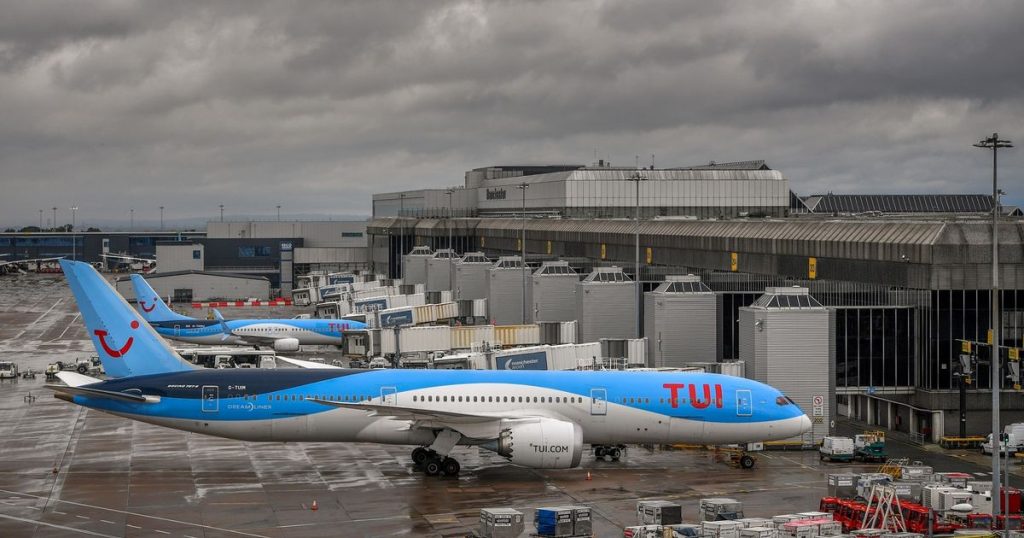A TUI plane, believed to be a Boeing 737-800, declared an emergency after leaving Manchester Airport and had to land at Exeter Airport to address a serious issue. The plane made an unplanned landing at Exeter Airport after issuing a Squawk 7700 emergency code indicating a “serious issue onboard the aircraft.” TUI confirmed it was a “repositioning flight” with no passengers onboard, sparked by a technical issue with the plane. The airline moves planes in their fleet from one airport to another without goods or passengers. The incident was reported to have ended safely, with no further details provided at that time.
Another incident reported was a flight from Manchester Airport forced to return after waste from a broken toilet leaked into the cabin. A passenger onboard had a medical emergency, leading to a diversion to Manchester Airport. The easyJet flight was traveling from Inverness to London Gatwick when the passenger suffered a medical issue. The airport confirmed the diversion due to a passenger with a heart issue feeling unwell. The Airbus A320-214 flight number EZY70W landed in Manchester to address the medical emergency and continued its journey to London Gatwick after the passenger received medical attention. The safety and well-being of passengers and crew members are always a top priority for airlines, making emergency landings necessary in such situations.
The TUI flight incident highlights the importance of addressing technical issues promptly to ensure the safety of passengers and crew. The emergency landing procedure was followed to address the serious issue onboard the Boeing 737-800 aircraft. It is not uncommon for airlines to have repositioning flights where planes are moved from one location to another without passengers or cargo. In this case, the technical issue necessitated the immediate landing of the aircraft to prevent any potential risks or dangers. The successful landing at Exeter Airport without any passengers onboard demonstrates the effectiveness of emergency protocols and procedures in place.
In the second incident involving the easyJet flight, a medical emergency onboard led to the diversion of the aircraft to Manchester Airport. The passenger’s well-being was prioritized, and the decision to land at the nearest airport was made as a precautionary measure. Airlines are equipped to handle medical emergencies with trained personnel and resources onboard to provide immediate assistance to passengers in need. The incident showcases the importance of being prepared for unforeseen situations during flights and the ability of airlines to respond quickly and effectively to ensure the safety and well-being of passengers.
Emergency landings are part of the standard operating procedures for airlines to address technical issues or medical emergencies during flights. The priority is always the safety and security of passengers and crew members, necessitating quick and decisive actions in such situations. Proper communication and coordination between the flight crew, air traffic control, and airport authorities ensure that emergency landings are carried out smoothly and efficiently. Passengers are reassured to know that airlines have protocols in place to handle emergencies and ensure the safe continuation of their journey.
Overall, incidents like these highlight the importance of safety protocols and procedures in aviation to address emergencies and ensure the well-being of passengers. Airlines are trained to handle various situations, from technical issues with aircraft to medical emergencies onboard. Passengers can be confident in the ability of airlines to respond effectively to ensure their safety and security during flights. The swift actions taken by the flight crews and airline authorities in these incidents demonstrate the commitment to passenger safety and the importance of preparedness in handling unforeseen circumstances while traveling.


